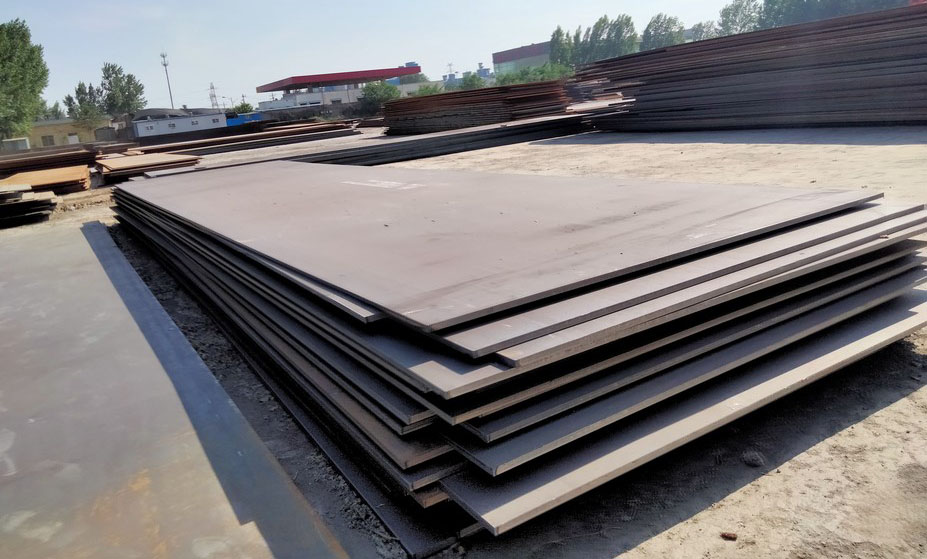
In the world of structural engineering and manufacturing, choosing the right material is crucial for ensuring safety, durability, and performance. Among the various steel options available, Q355 steel plate has emerged as a popular choice for numerous industrial applications. This guide will explore everything you need to know about Q355 steel plate, from its composition and mechanical properties to its different grades and practical uses.
What is Q355 Steel Plate?
Q355 is a low-alloy high-strength structural steel that complies with the Chinese standard GB/T 1591-2018. The designation "Q" stands for "Qu" (屈服强度 in Chinese), representing yield strength, while "355" indicates that the steel has a minimum yield strength of approximately 355 MPa (megapascals) in its basic form.
This steel grade offers an excellent balance of strength, toughness, and weldability, making it suitable for a wide range of structural applications where high strength is required without excessive weight.
Chemical Composition
The chemical composition of Q355 steel plate varies slightly across different grades, with controlled levels of carbon, manganese, silicon, and other elements to achieve specific properties:
Carbon (C): ≤ 0.20%
Manganese (Mn): ≤ 1.70%
Silicon (Si): ≤ 0.55%
Phosphorus (P): ≤ 0.045% (varies by grade)
Sulfur (S): ≤ 0.045% (varies by grade)
Vanadium (V): 0.02-0.15%
Aluminum (Al): ≥ 0.015% (for grades C, D, E)
The precise composition is carefully controlled to ensure the steel meets the required mechanical properties while maintaining good weldability and formability.
Mechanical Properties
Q355 steel plate exhibits impressive mechanical properties that make it suitable for demanding structural applications:
Yield Strength: ≥ 355 MPa (for thickness ≤ 16mm), decreasing slightly with increasing thickness up to 275 MPa for thickness 200-250mm
Tensile Strength: 450-630 MPa
Elongation: ≥ 21%
Impact Toughness: Varies by grade, with specific requirements for different temperature ranges
These properties ensure that Q355 steel can withstand heavy loads, resist deformation, and maintain structural integrity under various operating conditions.
Q355 Steel Grades
Q355 steel plate is available in several grades, primarily distinguished by their impact test requirements:
Q355A: No impact test requirement. Suitable for static applications in ambient temperatures.
Q355B: Impact test at 20°C. The most commonly used grade for general structural applications.
Q355C: Impact test at 0°C. Offers better low-temperature performance than B grade.
Q355D: Impact test at -20°C. Designed for use in cold environments.
Q355E: Impact test at -40°C. Provides excellent toughness in extremely low temperatures.
The choice of grade depends on the specific application temperature and the level of impact resistance required.
Applications of Q355 Steel Plate
Thanks to its excellent combination of strength, toughness, and weldability, Q355 steel plate finds applications in various industries:
Construction and Architecture: Used in building frames, bridges, and structural components where high strength is required.
Mechanical Engineering: Suitable for manufacturing machinery parts, equipment frames, and structural components.
Automotive Industry: Used in the production of heavy-duty vehicles, truck frames, and structural parts.
Shipbuilding: Applied in hull construction and marine structures due to its good weldability and strength.
Energy Sector: Used in the construction of power plants, transmission towers, and renewable energy structures.
Pressure Vessels: Suitable for manufacturing medium and low-pressure vessels due to its strength properties.
Advantages of Q355 Steel Plate
High strength-to-weight ratio, reducing overall structure weight
Excellent weldability, allowing for easy fabrication
Good toughness, ensuring resistance to impact loading
Versatility across multiple applications and industries
Cost-effective solution compared to some high-alloy steels
Conclusion
Q355 steel plate represents a versatile and reliable material choice for a wide range of structural applications. Its excellent mechanical properties, combined with good weldability and formability, make it a popular option in construction, manufacturing, automotive, and energy industries.
When selecting Q355 steel plate, it's essential to choose the appropriate grade based on the specific application requirements, particularly considering the operating temperature and impact resistance needs. By understanding the properties and characteristics of Q355 steel, engineers and manufacturers can make informed decisions to ensure optimal performance and safety in their projects.
Whether you're building a bridge, manufacturing heavy machinery, or constructing energy infrastructure, Q355 steel plate offers a compelling combination of strength, durability, and value that continues to make it a preferred choice in the global steel market.